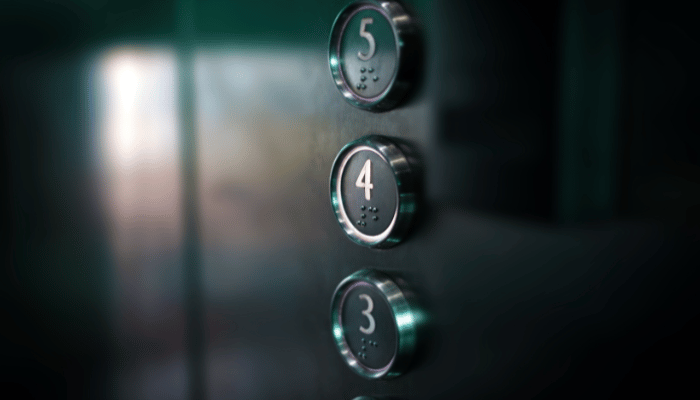
Home elevators are rapidly gaining popularity across Australia as more homeowners seek innovative ways to enhance their living spaces. With technological advancements, small lifts for houses in Australia are no longer just a luxury but a practical addition to modern homes. These elevators provide increased mobility, greater convenience, and an upscale touch that boosts property value.
At SWIFT Lifts, we aim to improve society by making life more comfortable and sustainable. This is achieved by introducing an affordable home lift concept that looks great and is fun. Whether you need a solution for aging in place, want to add convenience to your daily life, or simply desire a stylish feature for your multi-story home, a home elevator is a smart investment. Let’s explore why home lifts in australia are becoming essential, the different types available, factors to consider before installation, and regulations to keep in mind.
Why Consider a Home Elevators in Australia?
Aging in Place – Future-Proofing Your Home
As Australians look to stay in their homes for longer, household elevators provide a practical solution for aging in place. Rather than struggling with stairs as mobility declines, a home lift ensures seamless movement between floors. It’s a proactive way to enhance independence and safety while maintaining the comfort of familiar surroundings.
Convenience & Comfort – A Modern Lifestyle Upgrade
Navigating multiple floors can be exhausting, especially when carrying groceries, laundry, or heavy items. A small lift eliminates the hassle of stairs and improves daily convenience. For households with young children, elderly family members, or individuals with mobility challenges, a home elevator significantly enhances ease of movement.
Luxury & Property Value – A Smart Investment
Installing a lift for homes instantly adds a modern, high-end touch to your property. Many real estate experts believe houses with elevators have higher resale value as they appeal to more buyers. A stylish and functional lift can set your home apart in the property market, making it a worthwhile investment.
Types of Small Lifts for Houses in Australia
Hydraulic Home Elevators
Hydraulic lifts operate using fluid pressure, offering a smooth and quiet ride. These are ideal for homes where noise reduction is a priority. They are highly durable and can accommodate heavy loads, making them a great option for wheelchair users.
Pneumatic Vacuum Lifts
For homeowners with limited space, pneumatic vacuum lifts are a compact and space-saving solution. These lifts use air pressure to move between floors, requiring minimal construction work. They are also energy-efficient and have a sleek, futuristic design.
Traction Drive Lifts
Traction lifts use counterweight systems, making them energy-efficient and highly reliable for multi-story homes. They consume less power than hydraulic lifts and offer a smooth, comfortable ride.
Wheelchair-Friendly Lifts
For those requiring enhanced accessibility, wheelchair-friendly lifts are specifically designed to accommodate wheelchairs with ease. These lifts come with safety rails, wide doors, and easy-to-use controls, ensuring that everyone in the household can move freely.
Factors to Consider When Choosing a Household Elevator
Space Requirements – Finding the Right Fit
The available space in your home will determine the type of lift that best suits your needs. Compact home elevators are perfect for homes with limited space, while larger lifts may be needed for wheelchair accessibility.
Installation & Cost – Understanding Pricing
The cost of installing a residential lift varies based on the type, size, and customization options. Basic models start at around $30,000, while premium options can exceed $60,000. Installation complexity also affects pricing, with hydraulic and traction lifts typically requiring more structural modifications.
Energy Efficiency – Choosing an Eco-Friendly Option
Homeowners concerned about energy consumption should opt for energy-efficient models like traction drives or vacuum lifts. These lifts use minimal electricity and contribute to a sustainable living environment.
Safety Features – Compliance with Australian Standards
Safety is a top priority when installing a home lift. Key safety features to look for include:
- Emergency stop buttons
- Backup battery systems in case of power failure
- Automatic door-locking mechanisms
- Compliance with Australian safety regulations (AS 1735.18)

Home Lift Regulations & Installation Process in Australia
Australian Building Codes & Safety Standards
All residential elevators in Australia must comply with the Australian Standard AS 1735.18, which governs the design, installation, and maintenance of lifts in private homes. Before installing a home lift, you must check with local authorities regarding any specific building regulations.
Installation Timeline & Expectations
The installation process typically follows these steps:
- Site assessment & planning – Determining the best location for the lift
- Custom design & approvals – Ensuring compliance with building codes
- Structural modifications – Preparing the site for installation
- Lift installation – Installing the lift mechanism and testing
- Final safety checks – Ensuring the lift is fully operational and compliant
From start to finish, installation can take anywhere from 4 to 8 weeks, depending on the project’s complexity.
Maintenance & Servicing for Long-Term Efficiency
Regular maintenance ensures that your residential elevator remains in top condition. Most manufacturers recommend servicing every 6 to 12 months to check for mechanical wear, lubrication needs, and software updates.
Conclusion – Elevate Your Home with a Small Lift
Lift for homes are more than just a functional addition—it’s a game-changer for modern living, offering unparalleled convenience, enhanced accessibility, and increased property value. Whether designing your dream home or upgrading an existing one, a small lift for houses in Australia can seamlessly integrate into your space while improving your daily lifestyle.
For homeowners planning to age in place, a home elevator eliminates the challenges of stairs, ensuring long-term mobility and independence. Families with young children or individuals with limited mobility will also benefit from the added ease and safety of moving between floors without the risk of falls or injuries.
Beyond accessibility, home lifts elevate any property’s aesthetic and functional appeal. They add a touch of modern luxury, making a home feel sophisticated while increasing its market value. Many Australian homebuyers are now looking for homes with future-proof features, making a home elevator a smart and desirable investment.
A small lift doesn’t just transform how you navigate your home—it enhances your overall lifestyle. Whether you need a practical mobility solution, a luxurious upgrade, or an environmentally friendly lift, there’s an option that suits your needs and budget. Investing in a home elevator today means enjoying a more accessible, stylish, and future-ready home for years to come.
At SWIFT Lifts, we aim to improve society by making life more comfortable and sustainable. This is achieved by introducing an affordable home lift concept that looks great and is fun. Contact us today to find the perfect home elevator solution for your needs.
FAQs
The cost varies depending on the lift type and installation complexity, ranging from $30,000 to $60,000+.
In particular, traction drive and pneumatic vacuum lifts consume less energy than traditional hydraulic lifts.
In most cases, council approval is not required, but it’s recommended that local regulations be checked to ensure compliance.
Space requirements vary, but compact models can fit within an area of approximately 1 square meter.
Installation typically takes 4 to 8 weeks, depending on the project’s complexity.
Get in Touch!










